My Human-Powered Office
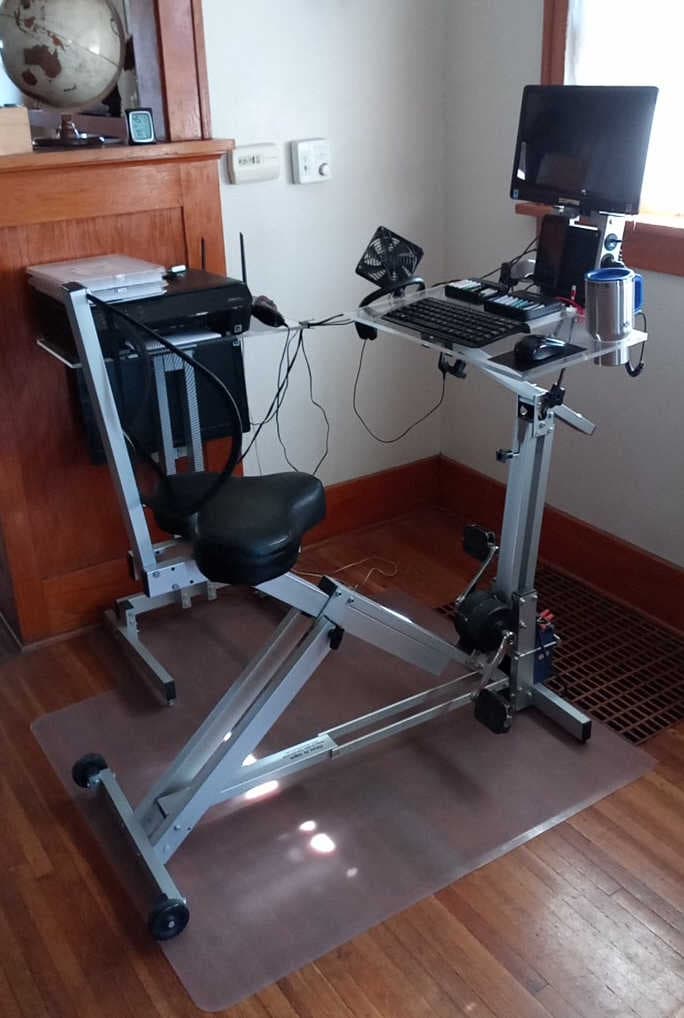
I have used a pedal-powered generator to power my home office since 2010 (You can learn why here.) Since I can only generate about 60 W of electricity when working at my desk, I need to pick my equipment carefully.
Below is a description of the equipment I use in my office. I include some issues to consider if you are thinking of setting up your own human-powered office. None of the links in this article are affiliate links.
I conclude with a description of my typical workday.
My Office Equipment
Laptop
I originally used a laptop with my desk. The first laptop I used was a 15" Dell Inspiron 3515 laptop. I later replaced it with an 11" Acer C720 Chromebook. These laptops consumed about 25 W and 10 W, respectively, in use.
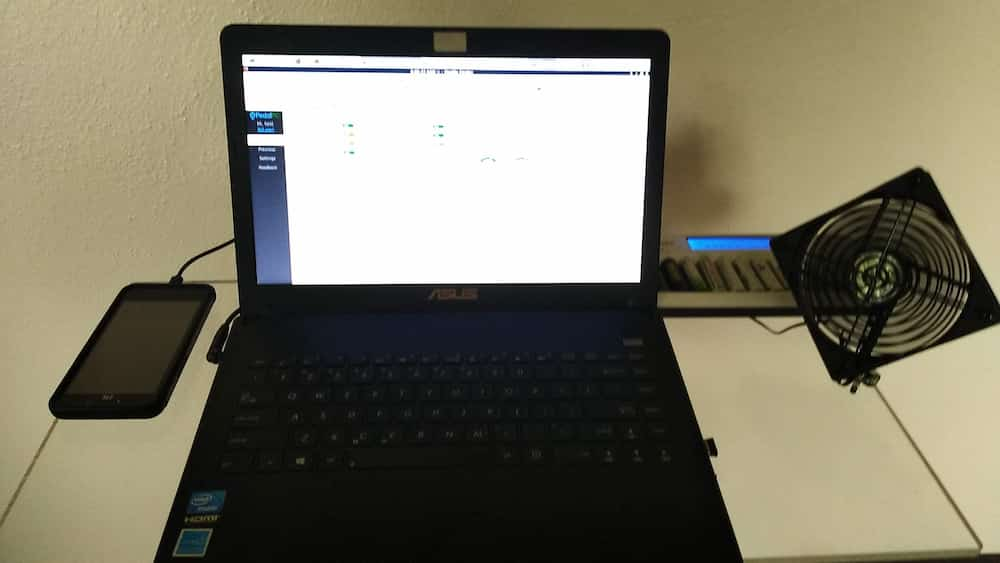
Both these laptops are now several years old. Newer laptops consume significantly less power. My father-in-law's 11" Dell, for instance, is roughly comparable to the C720 and draws only 6 W, while a typical 13-15" laptop consumes 12-20 W. High-performance laptops may require more than this.
All the values referenced above assume a fully-charged laptop battery. If not, the power consumption will be far higher.
Most laptops I've tried consume about 40-50 W while charging until the battery reaches 80%, then gradually taper off to their fully-charged power consumption level. If the laptop's battery is fully depleted, charging can take 3 hours or more. Unless you are looking for a real workout, it's best to use a fully-charged laptop with a pedal-powered generator.
You can save a few watts if you use a DC-DC adapter to power a laptop instead of the manufacturer's AC power adapter. That's because a pedal generator normally produces DC electricity. Using the laptop's AC adapter requires unnecessary DC-to-AC and AC-to-DC power conversions.
Desktop Computer
I currently use a Kodlix GN41 fanless mini PC I bought used on Ebay as my main computer. It's equipped with an Intel quad-core N4100 processor, 8 GB of RAM, and 64 GB eMMC storage. It consumes about 4.5 W of power at idle, and up to 8 W under load. It's powered directly off of one of the PedalPC's 12V DC sockets.
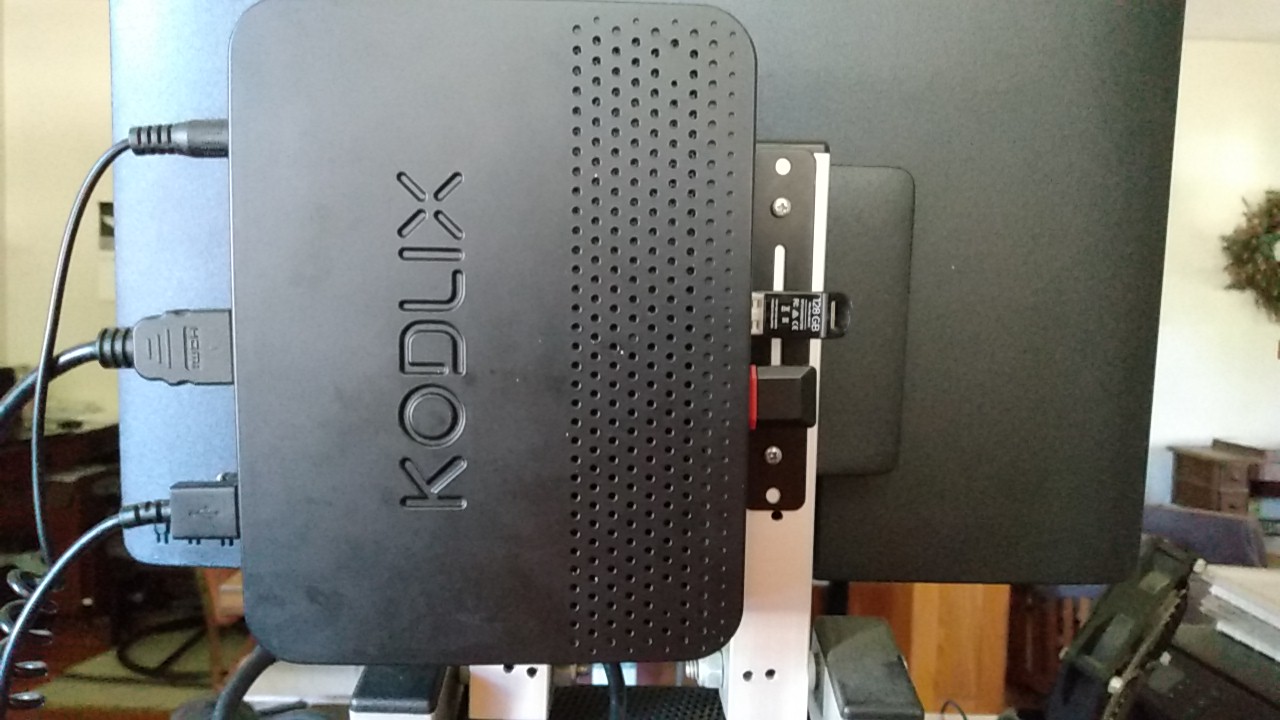
I previously used a Raspberry Pi 4, and before that a Friendly Arm NanoPi M4.
Both computers were perfectly adequate for my typical desktop tasks. I used them to write software, create 2D and 3D CAD drawings, edit images, and manage email. I also used them to stream music while I work, browse the web, and watch occasional YouTube videos.
Both computers consumed 1-2 W less power than the GN41, but were much slower to load complicated web sites. That is why I made the switch.
The GN41 came with Windows 10 pre-installed on the eMMC, but I never used it. Instead, I installed Debian Linux. I do not know how well it runs Windows, but it runs Debian very well.
I am not an expert on Apple computers, but it appears some Mac Minis might make acceptable pedal-powered computers if not stressed too heavily.
Desktop computers can draw a lot of power, so choose carefully. I recommend using a fanless one. It not only eliminates the noise and power consumption of a fan, but insures the CPU is energy-efficient enough to operate without extra cooling.
Monitor
I use a Sceptre E165W 16" LED monitor. The monitor came with a AC power adapter, but I powered it directly off one of the desk's four 12V DC sockets. This saves a couple of watts of power by avoiding a round-trip DC-to-AC-to-DC conversion.
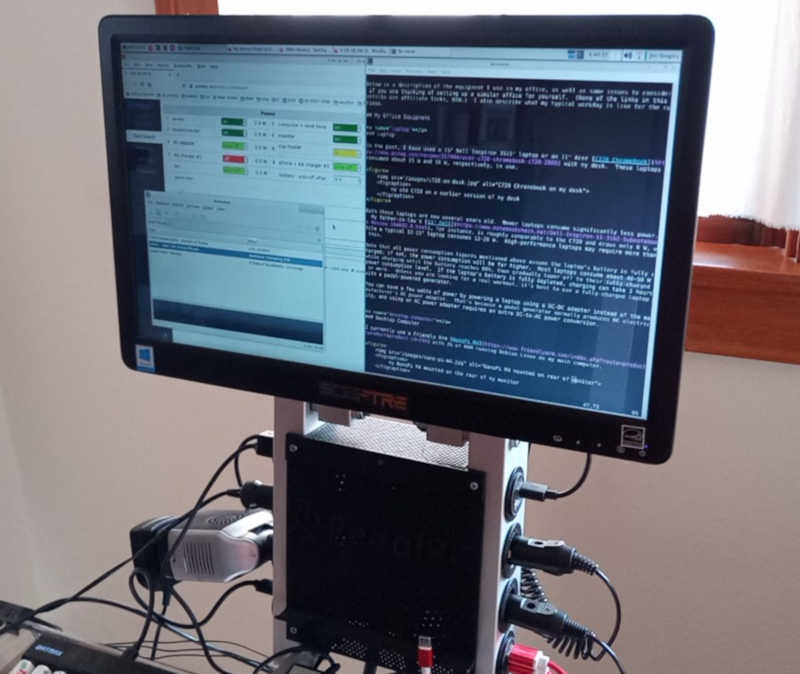
I like this monitor a lot. It is a very affordable and extremely energy-efficient (<3.5 W when powered off of DC). Though only rated for 1366x768 resolution, it can actually display at 1920x1080.
Unfortunately, Sceptre appears to have discontinued it. It has been unavailable for quite awhile.
If you're a developer more accustomed to a 27" screen or multiple side-by-side monitors, you will probably want something larger. If so, choose your monitor carefully, as some large monitors consume significant power.
Inkjet Printer
We use a HP Envy 4500 3-in-1 multifunction inkjet printer to print assembly instructions for the products we make, customer invoices, and shipping labels. It draws about 1 W when idle and 13 W when printing. Other inkjet printer models seem to consume a similar amount of energy.
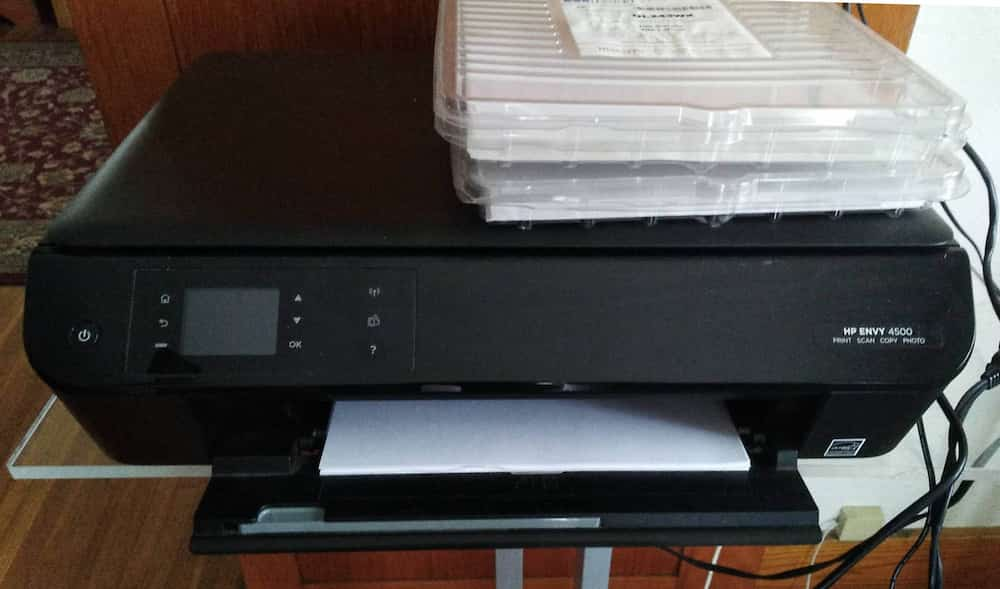
When the power switch is first turned on, this particular printer causes a 30 W power spike during initialization. The sudden drop in voltage this caused would sometimes cause glitches in some of the other equipment I used. I fixed this by adding extra filter capacitors to the pedal generator's power supply system.
This printer is the only device in my office that does not have an external AC adapter, and therefore requires using a DC-to-AC inverter to power it. This adds 2.5 W to its power consumption.

If you want to use a laser printer with a pedal-powered generator, forget it. The heater used in laser printers to fuse the toner to the paper consume more power than you can reasonably supply yourself.
Internet Connection
Our fiber-to-the-home connection is terminated by a Nokia ONT provided by our Internet service provider (Metronet). Like the monitor, it's powered by a 12 V DC power cable plugged into one of the desk's power sockets. Our router/web server plugs into its Ethernet jack to provide our home's wifi connection. One of the desk's USB sockets powers the router.
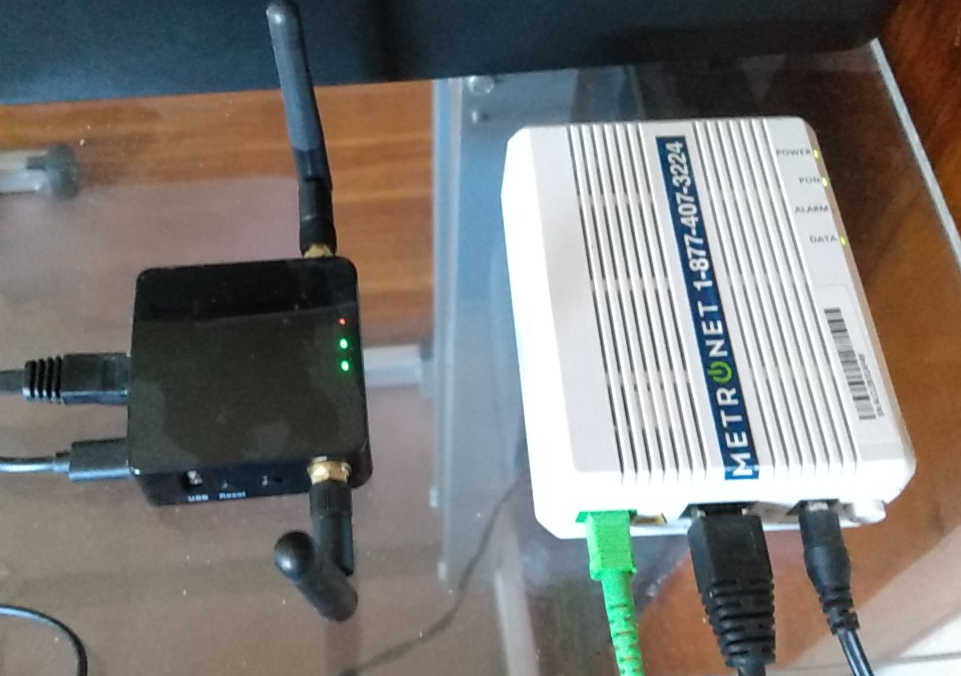
As I wrote in my article about how I set up our human-powered wifi broadband network and web server, you need to select your ISP and networking equipment carefully. The equipment will be on 24 hours a day, so small differences in power consumption add up to big differences in how long you need to pedal each day to keep your network online.
Cooling Fan
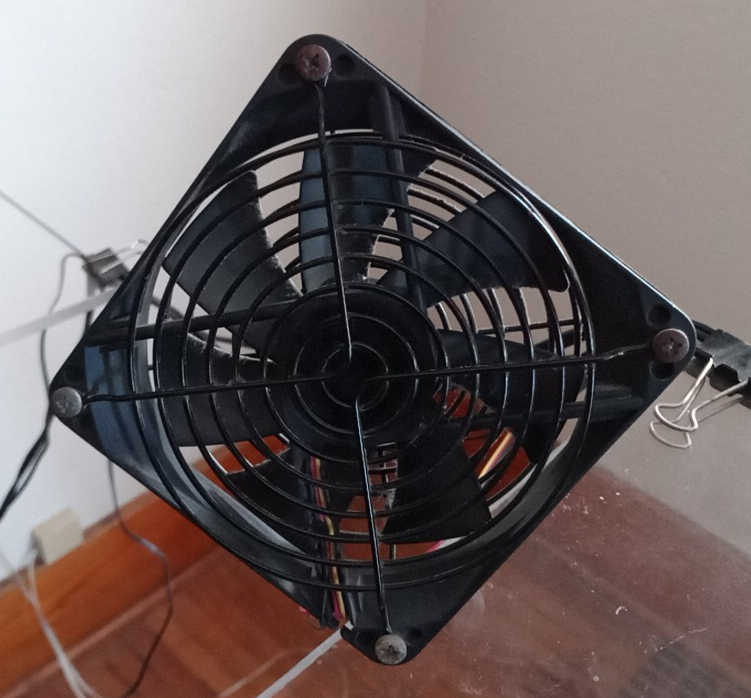
Pedaling for long periods can make you very warm. To keep cool, I use a generic 120 mm computer case fan mounted on an adjustable pivot attached to the side of my desktop. A standard 3-pin fan header on the desk's circuit board supplies power for the fan. I can control it's speed using a slider on the desk's dashboard. It draws 3 W running at full speed.
Web Server
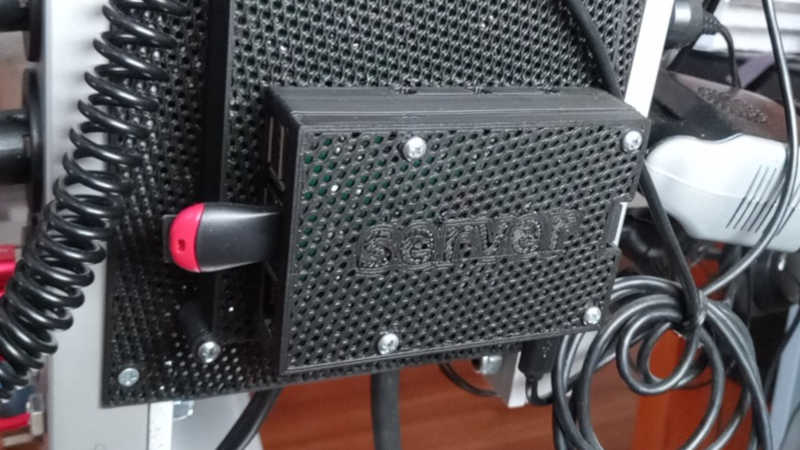
I control my desk using a Raspberry Pi 3B. It serves up a dashboard interface I leave open in a web browser tab while I work. Since I have it set up as a web server already, I decided to use it to serve this website over the internet. The web page you're viewing right now came from this computer.
Phones
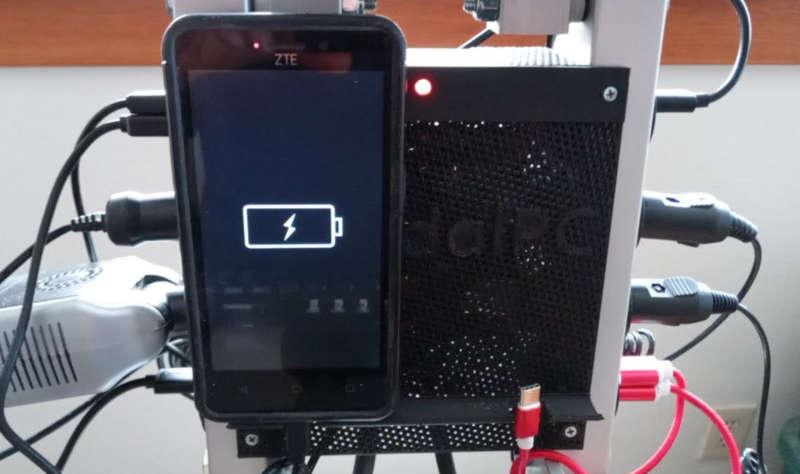
My wife and I recharge our phones using a couple of the desk's built-in USB power sockets. The power consumed by a phone varies by phone model. My phone draws a maximum of 10 W when it is low, while my wife's phone draws about 6 W. Quick-charge-capable phones will draw more power than this when connected to a quick-charge-capable USB socket.
AA/AAA Battery Charger
We use a lot of AA and AAA Ni-MH and a few Li-ion batteries around our home. I use three different 8-cell AA charges to charge them while I work:
- a USB-powered Batmax trickle charger
- a USB-powered Tenergy charger
- a 12-V powered Miboxer C8, (currently available on Amazon, but likely discontinued as it's no longer listed on Miboxer's website).
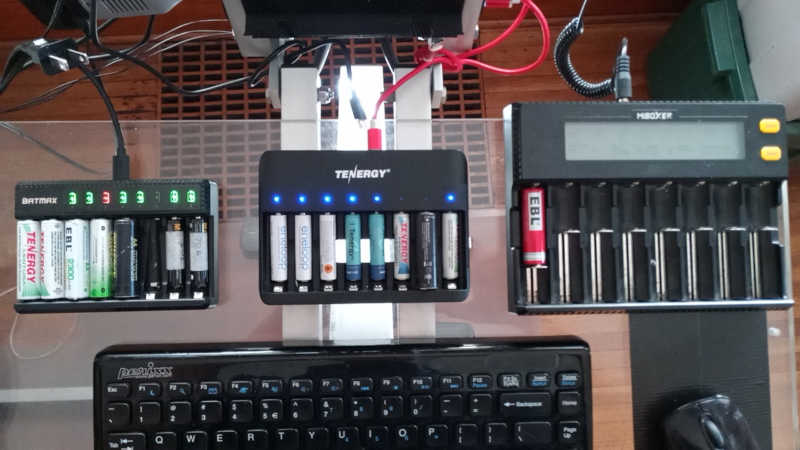
I use the Tenergy charger the most. It is the most trouble-free of the three and charges batteries relatively quickly. The Batmax takes much longer to charge batteries than the Tenergy, too long for my tastes. The Miboxer takes up more space and is the most fickle (e.g., it often silently stops charging when I stop pedaling and the voltage drops). I mostly use it to charge Li-ion batteries since the others only charge NiMH.
I rarely charge more than 12 batteries at a time, so I use at most two chargers at once, mostly the Tenergy and Batmax.
With the exception of the Batmax, each charger consumes about 1 W per AA battery being charged. A fully-depleted battery in good condition can be recharged in about 3 hours (at least twice that when using the Batmax). Batteries in poor condition will draw less power when charging but take much more time to charge, due to their higher internal resistance.
LED lights
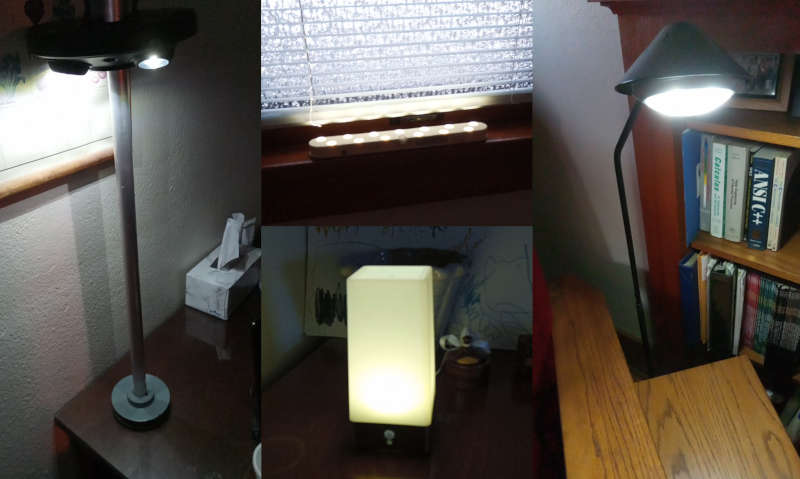
We use most of the AA batteries mentioned above to power LED lights around our house. We use these lights in lieu of standard desk lamps and ceiling lights. The AAA batteries are used in smaller lights, like headlamps and bicycle taillights, that consume less power than the household lights. But, since the batteries have half the capacity of AA batteries, they have to be charged at approximately the same frequency as AA batteries.
I recharge light batteries depending on how much each light is used. Lights we use every evening are charged daily. Motion-sensing lights are charged every three days. Rarely-used lights are charged every couple of months or so.
Our batteries do not need to be charged this frequently, as they are are seldom very low. I just like having them always topped off.
Battery-powered LED lights have several advantages. You can put them anywhere in your home, including areas without light fixtures or power outlets. The lights are portable, so you can move them whenever you feel like it, and take them with you when you move. Perhaps most importantly, you're not left in the dark when the power fails.
You can learn more about using battery-powered LED lights in your home in my article about setting up a pedal-powered home lighting system
Electric Shaver
I use a Remington R3000 electric shaver to shave each day.
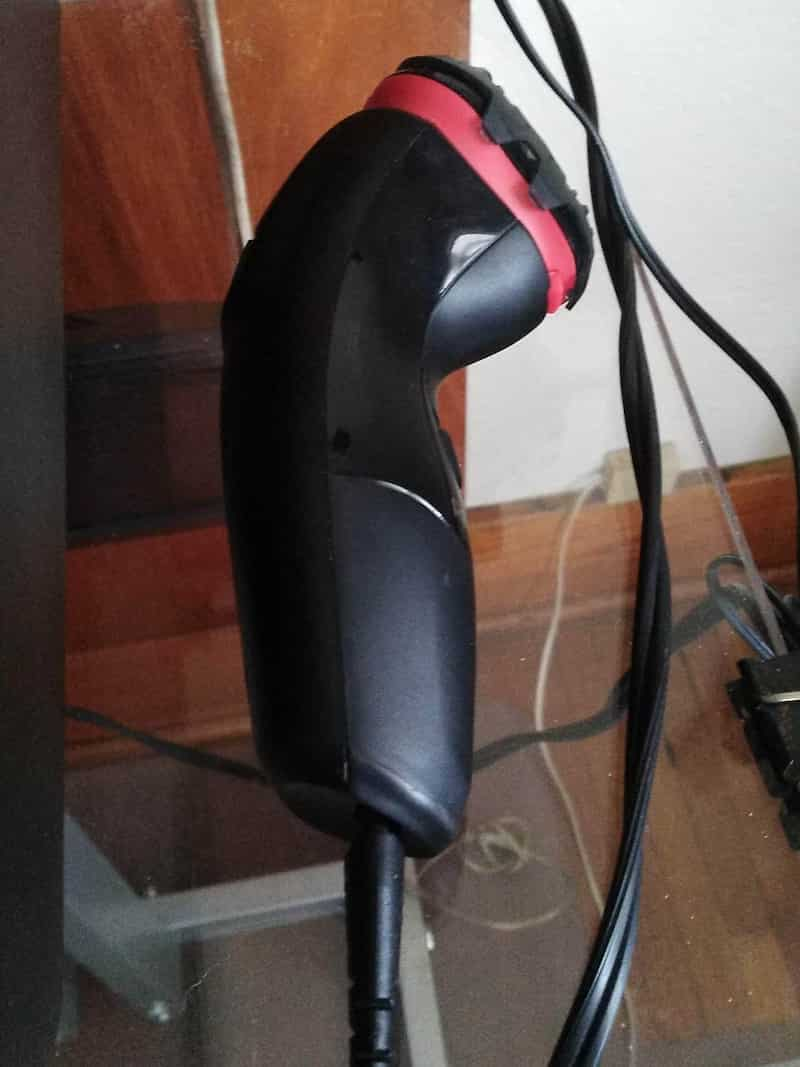
According to the specs on the power adapter, it should only draw 0.4 W when charging, making it well-suited for charging off a USB port. Unfortunately, it has a non-standard charging voltage (4 V) and proprietary charging socket, so to charge it I'm forced to use it's AC power adapter and a DC-to-AC inverter. This increases it's power consumption 5x (2.5 W).
Heated Beverage Cup
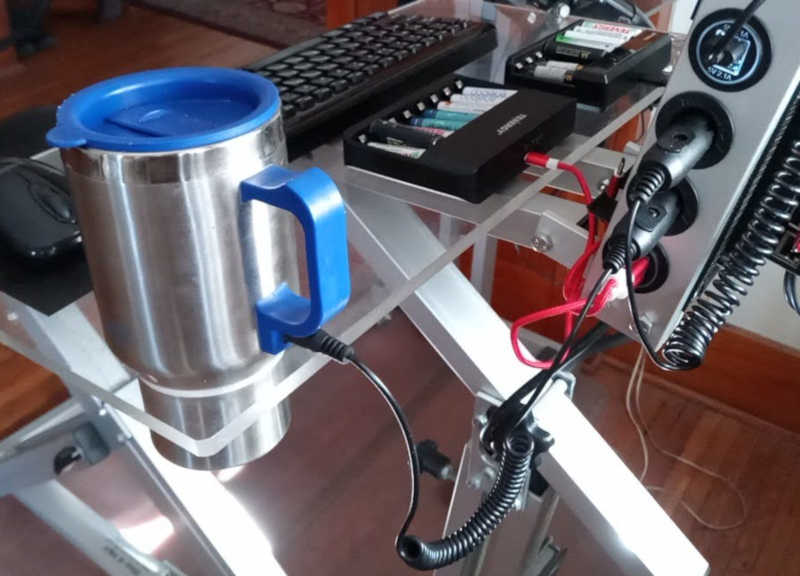
I use this cup as a "dump load"--a place to dump the excess power I'm generating once all the batteries I'm charging are full. It's a good use of energy that would otherwise go to waste.
Like the fan, the power to the cup is controlled using pulse-width modulation. A slider on the desk's dashboard sets the PWM duty cycle. The cup draws 24 W when fully on (i.e., 100% duty cycle). The cup has a built-in thermal safety switch which cuts power to it's heater when the temperature of the liquid reaches about 140 F. That rarely happens, but when it does, I just stop pedaling, sip my hot beverage, refill my cup, then resume pedaling.
My Workday
I usually work on my computer for an hour or so before breakfast, responding to email, working on CAD drawings, and writing code or blog posts (like this one). This is typically my most productive part of the day in terms of the total work (both office and physical) accomplished.
It is also the time of the day when I'm strongest. I can generally maintain an electrical power output of 60-70 W.
I generally work on my computer another 45 minutes before lunch, responding to email and handling accounting tasks. If we have any outgoing packages to ship, I'll pedal another 10-15 minutes late in the afternoon to print shipping labels.
By evening, the desk's storage battery is partially depleted, having powered our internet gateway and the web server all afternoon. I usually spend another hour or so pedaling to recharge it.
I am also depleted by this time, too. My power output in the evening is usually 5-10 W less than in the morning.
In total, I currently spend 3-4 hours a day pedaling at my desk and generate 200-250 Watt-hours each day. About 60% of that electricity goes to keeping our internet connection up and running this web site around the clock.